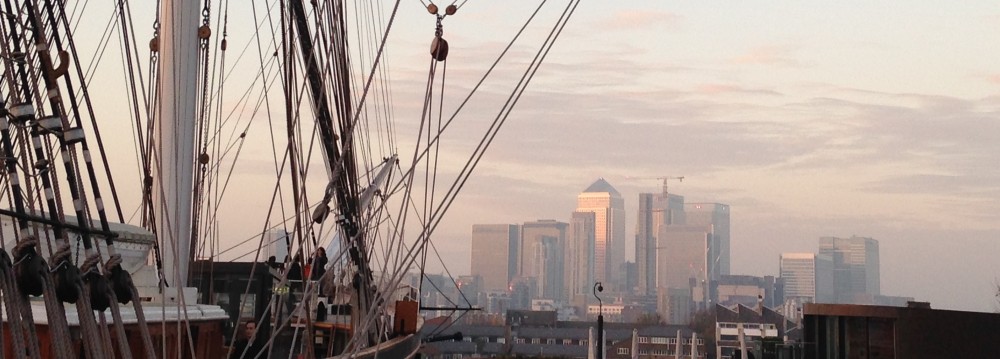Aachen, Germany, is a wonderful small city near the border with Belgium and Netherlands. Charlemagne, king of the Franks made Aachen his capital in the 790s, in part because of the warm springs that are to be found there. His empire united the two halves of the Frankish people, both the Latin and Germanic oriented populations. Even today, the French and German peoples count Aachen as part of their heritage (though the French call it Aix-la-Chapelle).
However, even though Aachen is just a few hours drive from Paris, it has much different feel. Coming from Paris, the signs along the highway already shift from French to German a few kilometers before reaching the Belgian-German border. (There are a few German-speaking towns in Belgium.)
Once in Aachen, we are always struck by the restaurants, cafes, pubs and bakeries and the obvious gastronomic contrasts with those in our hometown in France. In Aachen, the food and drink are tuned to central European preferences and sensibilities. The beer offering shifts away from the sour and strong brews of Belgium (or sometimes watery beers of France) and towards the lighter but flavorful Pilsners and Koelsches. Goose and schnitzel turn up on the menus. Savory rolls of rye or whole wheat are to be had, along with kaiser rolls decked out with lox, onions and lettuce.
Aachen’s center has a comfortable feel with an extensive pedestrian zone that meanders among the old stones of the medieval city. It offers a balanced mix of museums and sites of historical interest, eating and drinking establishments, shops and parks.
The chapel from Charlemagne’s palace survives and forms the center of the current cathedral. It may be that one of the towers of city hall incorporates another part of the palace, but in any event the city hall is a splendid old structure in its own right. There are several of the original city gates still standing, as well as other interesting architectural features in some of the houses and shops. Together, these structures give Aachen an old and dark, but warm atmosphere.
Aachen has become a traditional destination for my family just prior to Christmas. Each December (through 23 Dec), there is a sprawling Christmas market along the pedestrian zones. The city is decorated with holiday lights and greenery. There is a festive atmosphere with convivial crowds of happy people patronizing stands selling hot mulled wine, stollen, cookies, bratwurst and potato pancakes, as well as all sorts of holiday gifts. Many stands offer handmade and artisanal products. There are brass bands and piped in Christmas music in the city squares, as well as choral presentations at the cathedral and other churches. The weather is often lousy, but the Christmas decorations brighten everything, regardless. It is wunderbar!
Recommendations:
Nobis: fine bakery; eat in (self-serve) or carry out; great for lunch (nice sandwiches), or coffee & cakes, special cookies, gingerbread, and other baked treats.
Rose am Dom: nice restaurant in an old inn (14th century) serving hearty, quality meals. In season, they serve game such as duck, goose, wild boar and venison as well as wild mushroom soup.
Aachener Dom (cathedral): a wonderful architectural gem built to house relics of the Virgin Mary. The heart of the structure is Charlemagne’s octagonal palace chapel, with an amazing, newly restored interior with elements from various periods. Take the docent tour, which offers interesting history and explanations, as well as a chance to see the throne of the Frankish kings possibly dating back to Charlemagne’s time.
Cathedral treasury museum: this is also worth a visit! It contains many interesting artifacts and relics including a marvelous reliquary with part of Charlemagne’s arm (bones).
City hall: Tourists can visit this medieval structure and see the great hall and several other fine rooms. Be sure to check out the city council chamber, which includes portraits of Napoleon and Josephine (gifts from the Napoleon to the city).
Aquis Grana Hotel This hotel is very centrally located, near the cathedral and Nobis, and offers a fine breakfast. Park your car in the city garage across the street and leave it there during your stay. Aachen is a city to explore on foot.




